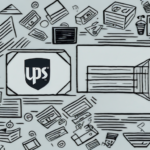How to Get Discounted UPS Shipping Rates
If you're a business owner, shipping is likely a significant part of your operation. With shipping costs on the rise, it's more important than ever to find ways to save money. Discounted UPS shipping rates can help reduce your expenses. In this article, we'll explore everything you need to know about obtaining discounted UPS shipping rates, from why shipping rates matter to how to optimize your packaging to save money.
Why Shipping Rates Matter for Your Business
Shipping rates significantly impact your business's bottom line. High shipping costs can erode profits and make your products less competitive in the market. According to the 2019 E-commerce Shipping Cost Report, shipping expenses account for approximately 10-15% of the total order cost for online retailers.
Reducing shipping costs is essential, and obtaining discounted UPS shipping rates is a strategic starting point. By managing these costs effectively, you can offer better prices to your customers or increase your profit margins.
One effective way to reduce shipping costs is by optimizing your packaging. Proper packaging helps avoid dimensional weight charges and reduces the need for excessive void fill. UPS suggests using appropriately sized boxes and materials to minimize weight and dimensions. Additionally, utilizing eco-friendly packaging materials can not only save money but also attract environmentally conscious customers.
Another critical factor affecting shipping rates is the carrier's delivery time options. Customers increasingly expect fast and reliable shipping. Choosing a carrier that offers expedited shipping can meet these expectations, but it's essential to balance speed with cost-effectiveness. Faster shipping options generally come with higher rates, so analyzing your customers' needs and preferences is vital.
Understanding the Basic Structure of UPS Shipping Rates
The first step to securing discounted UPS shipping rates is understanding how UPS calculates them. UPS shipping rates are determined by various factors, including package weight and dimensions, destination, shipping speed, and any additional services required.
Package Weight and Dimensions: UPS uses both the actual weight and dimensional weight to calculate shipping costs. Dimensional weight is determined by the volume of the package and is calculated using the formula: length × width × height ÷ 139. If the dimensional weight exceeds the actual weight, the dimensional weight is used for billing.
Destination: The shipping destination significantly impacts the rate. Domestic shipments within the same country are generally less expensive than international shipments. Additionally, shipping to remote or rural areas may incur higher costs.
Shipping Speed: UPS offers various shipping speeds, such as Ground, 2nd Day Air, and Next Day Air. Faster delivery options come at a higher cost. Selecting the right shipping speed based on your business needs and customer expectations is crucial for cost management.
Additional Services: Services such as insurance, signature confirmation, and special handling can add to the overall shipping cost. Evaluating the necessity of these services can help in managing expenses.
How to Compare UPS Shipping Rates with Other Carriers
UPS is a prominent player in the shipping industry, but it's not the only option available. Comparing UPS shipping rates with other carriers such as FedEx, DHL, and the United States Postal Service (USPS) can help you find the most cost-effective solution for your business needs.
Key Comparison Factors:
- Shipping Speed: Compare the delivery times offered by different carriers to determine which best meets your customers' expectations.
- Rates: Examine the cost per shipment, factoring in weight, dimensions, and destination.
- Reliability: Research carrier reliability and on-time delivery rates. Customer satisfaction surveys and industry reports can provide valuable insights.
- Additional Services: Consider the availability and cost of additional services like tracking, insurance, and signature confirmation.
According to the 2023 Shipping Benchmark Report, FedEx often offers competitive rates for expedited shipping, while USPS may provide more economical options for small, lightweight packages.
Utilizing online comparison tools, such as ShipStation or Shippo, can simplify the process by providing side-by-side rate comparisons across multiple carriers.
How to Qualify for UPS Shipping Discounts
Qualifying for discounted UPS shipping rates involves leveraging volume discounts, loyalty programs, and strategic partnerships. Here are several methods to achieve cost savings:
Volume Discounts
Businesses that ship large volumes can negotiate better rates with UPS. UPS offers tiered pricing based on the number of packages shipped per month. The more you ship, the lower your per-package rate can be. For example, shipping over 1,000 packages a month may qualify you for significant discounts.
Loyalty Programs
UPS provides loyalty programs such as the UPS Rewards program, which offers benefits like discounted rates and exclusive promotions to frequent shippers. Enrolling in these programs can provide consistent savings over time.
Strategic Partnerships
Partnering with UPS through the UPS Technology solutions can unlock additional discounts and tailor shipping solutions to your business needs. This includes integrating UPS shipping software with your e-commerce platform to streamline operations and reduce costs.
Negotiating with UPS for Better Shipping Rates
Negotiating directly with UPS can lead to better shipping rates, especially if you have a high shipping volume or a long-term partnership. Here are some tips for successful negotiations:
- Prepare Your Data: Present a clear overview of your shipping volume, historical data, and future projections. Demonstrating your business's potential growth can give you leverage in negotiations.
- Research Competing Rates: Come prepared with information on rates from other carriers. Highlighting competitive offers can strengthen your position.
- Consider Bundling Services: Consolidating multiple UPS services, such as printing and logistics, can provide opportunities for additional discounts.
- Be Flexible: Showing willingness to adjust your shipping methods or volumes in exchange for better rates can facilitate favorable terms.
According to Forbes, effective negotiation involves clear communication of your needs and understanding the carrier's offerings to find mutually beneficial terms.
Using Third-Party Shippers to Lower Your UPS Shipping Costs
Third-party shippers like ShipBob and ShipStation can help you save on shipping costs by consolidating orders and accessing the best rates from multiple carriers, including UPS. If direct discounted rates from UPS are challenging to secure, partnering with a third-party shipper could be a cost-effective solution.
Benefits of using third-party shippers include:
- Consolidated Shipping: Combining orders can lower per-package costs and reduce transit fees.
- Access to Multiple Carriers: Third-party shippers can negotiate better rates due to their higher shipping volumes and provide you with a range of shipping options.
- Advanced Tracking and Reporting: Gain greater visibility into your shipping operations, allowing for better planning and cost management.
When selecting a third-party shipper, ensure they have a reputable track record for reliability and customer satisfaction. Consider factors such as pricing structures, shipping options, and customer support to align with your business needs.
Benefits of Signing Up for UPS Rewards Programs
UPS offers several rewards programs that help businesses save on shipping costs, including the UPS My Choice program and the UPS Small Business Program. These programs provide perks like discounted rates, waived fees, and exclusive promotions.
The UPS Small Business Program offers customized solutions for small to medium-sized businesses, providing access to discounted rates based on shipping volume and loyalty. Additionally, the UPS My Choice program allows for better control over deliveries, reducing missed shipments and associated costs.
Participating in these rewards programs not only delivers direct savings but also enhances shipping efficiency, contributing to overall business growth.
How to Optimize Your Packaging to Lower Shipping Costs
The size and weight of your packages significantly impact your shipping costs. Optimizing your packaging involves minimizing weight and dimensions without compromising product safety. Here are strategies to achieve this:
Select the Right Box Size
Using appropriately sized boxes helps avoid unnecessary dimensional weight charges. Measure and select boxes that closely fit your product to reduce excess space. UPS provides guidelines on proper packaging to help businesses select the right box sizes.
Choose Lightweight Materials
Opt for lightweight packaging materials such as lightweight corrugated boxes and minimal padding. This reduces the overall package weight and can lead to lower shipping costs.
Eliminate Unnecessary Padding
Use only the amount of void fill necessary to protect your product during transit. Over-packing not only increases weight but also adds to material costs.
Utilize Flat-Rate Shipping Boxes
Flat-rate boxes have a fixed cost regardless of weight or distance. They can be a cost-effective option for shipping heavier items or shipments over long distances. UPS offers various flat-rate shipping options.
Incorporate Eco-Friendly Packaging
Using recycled or biodegradable materials can reduce packaging costs and appeal to environmentally conscious consumers. Sustainable packaging solutions not only lower expenses but also contribute to your brand’s green initiatives.
Using Technology to Save on UPS Shipping Fees
Leveraging technology can lead to significant savings on UPS shipping fees. Implementing shipping software and utilizing UPS's online tools can streamline your shipping process and secure the best rates.
Implement Shipping Software
Shipping software like ShipStation or Shippo integrates with your e-commerce platforms to automate shipping processes, compare rates across carriers, and print labels efficiently. These tools often include features that optimize carrier selection, taking advantage of discounted rates where applicable.
Utilize UPS Online Tools
UPS offers various online tools such as UPS My Choice and UPS Marketplace. These platforms provide access to exclusive discounts and promotions, manage shipment tracking, and facilitate bulk shipping operations to save time and costs.
Additionally, adopting automation tools for packaging and label generation can reduce manual errors and improve operational efficiency, leading to cost savings.
Finding and Applying UPS Promo Codes and Coupons
Taking advantage of UPS promo codes and coupons is an effective way to lower your shipping costs. UPS frequently offers discounts and promotional offers that can be applied to your shipments.
Check the UPS Website
Regularly visit the UPS promotions page to find the latest promo codes and coupon offers. These promotions may include percentage discounts, flat-rate discounts, or free shipping on specific services.
Subscribe to UPS Newsletters
Signing up for the UPS email newsletter ensures you receive exclusive promo codes and coupons directly in your inbox. This is a convenient way to stay informed about special offers and save on your shipping expenses.
Follow UPS on Social Media
UPS often shares special offers and promotional codes on their social media platforms, including Facebook, Twitter, and Instagram. Following these accounts can keep you updated on the latest deals and opportunities to save.
Tips for Tracking and Managing Your UPS Shipments
Tracking and managing your UPS shipments effectively can help ensure timely deliveries and optimize shipping costs. Utilizing UPS’s tracking tools and shipping software provides real-time visibility into your shipments.
Use UPS Tracking Tools
UPS’s tracking tools allow you to monitor the status of your shipments from departure to delivery. Staying informed enables you to address any issues promptly and maintain customer satisfaction.
Adopt Shipping Software
Third-party shipping software can integrate with your order management systems to provide comprehensive tracking and reporting features. This enhances operational efficiency and helps in managing shipping costs effectively.
Optimize Packaging
Properly packaging your items not only protects them during transit but also ensures compliance with UPS’s packaging guidelines. Using sturdy boxes and appropriate cushioning minimizes the risk of damage and returns, further reducing costs.
Accurate Labeling
Clearly and accurately labeling your packages prevents delivery delays and misrouting. Ensure all shipment details are correct to avoid additional handling fees or charges.
Common Mistakes That Increase Your UPS Shipping Costs
Avoiding common shipping mistakes can help keep your UPS shipping costs down. Here are some frequent errors businesses make that lead to increased expenses:
- Using the Wrong Package Size: Oversized packages can result in higher dimensional weight charges.
- Not Optimizing Packaging: Excessive padding and bulky packaging increase weight and size, raising shipping costs.
- Failing to Compare Rates: Not comparing UPS rates with other carriers can lead to missing out on more cost-effective options.
- Neglecting Discounts and Promotions: Overlooking available discounts and promo codes means missing potential savings.
- Poor Labeling and Documentation: Inaccurate labels and missing paperwork can cause delays and extra fees.
By being aware of these mistakes and implementing best practices, you can manage your shipping costs more effectively and maintain competitive pricing for your products.
Best Practices for Managing International and Expedited UPS Shipments
Managing international and expedited UPS shipments requires specific strategies to control costs and ensure smooth delivery. Implementing best practices can help facilitate these types of shipments effectively.
Use Third-Party Customs Brokers or Consolidators
For international shipments, partnering with a customs broker or consolidator can simplify the customs clearance process and reduce associated costs. These partners can assist with documentation, tariff classification, and dealing with any customs-related issues.
Plan Ahead for Expedited Shipments
Planning your shipments in advance can help avoid the need for expedited shipping, which typically costs more. If expedited shipping is necessary, ensure that it aligns with your budget and customer expectations.
Proper Packaging for International Shipments
Ensure that your packages are securely packaged and comply with international shipping standards. Overlooking packaging requirements can lead to rejected shipments or additional handling fees.
Stay Informed on Shipping Regulations
International shipping regulations can change frequently. Staying updated on the latest regulations, duties, taxes, and documentation requirements can help prevent unexpected costs and delays.
According to the UPS Global Shipping Guide, understanding and adhering to international shipping regulations is critical for cost-effective and timely delivery.
Final Thoughts: Making the Most of Your Discounted UPS Shipping Rates
Obtaining discounted UPS shipping rates can significantly impact your business's profitability and competitiveness. By understanding how shipping rates are determined, comparing rates with other carriers, and optimizing your packaging, you can effectively reduce shipping costs.
Exploring various discount opportunities, including loyalty programs, negotiating with UPS directly, and utilizing third-party shippers, can further enhance your savings. Additionally, leveraging technology, such as shipping software and UPS's online tools, streamlines your shipping process and ensures you are always accessing the best available rates.
Avoiding common shipping mistakes and adhering to best practices for managing both domestic and international shipments will contribute to sustained cost savings and operational efficiency. Ultimately, making informed decisions about your shipping strategy will help your business thrive in a competitive market.






















